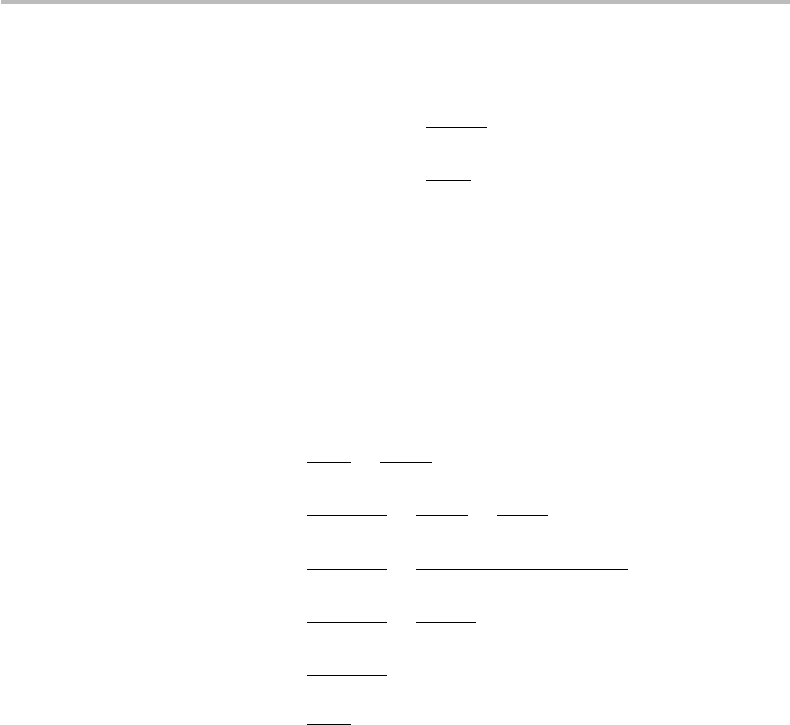Desurvire E. Classical and Quantum Information Theory: An Introduction for the Telecom Scientist
Подождите немного. Документ загружается.


Arithmetic coding algorithm 607
x
2
x
2
x
3
x
2
x
2
x
2
x
2
x
2
x
1
x
2
x
1
x
3
x
2
x
1
x
2
x
2
x
1
x
1
x
1
x
2
x
3
x
1
x
2
x
2
x
1
x
2
x
1
x
1
x
1
x
3
x
1
x
1
x
2
x
1
x
1
x
1
1
x
3
x
1
2
xx
)()(
21
xpxp
+
0
2
x
)(
1
xp
1
2
2
xx
32
xx
11
xx
21
xx
3
1
xx
23
I
13
I
3
I
2
I
1
I
I
22
I
21
I
12
I
11
I
223
I
213
I
123
I
113
I
Figure H2 Symbol strings with lengths up to N = 3.
The same results as in Eqs. (H9) and (H10) can be obtained for the interval I
13
, corre-
sponding to the string x
1
x
3
(Fig. H1), with the argument I
2
changed into I
1
.
Consider next the case of symbol strings with lengths up to N = 3, which correspond
to all the intervals that have been highlighted in Fig. H2.
The strings with lengths N = 3, namely x
1
x
1
x
3
, x
1
x
2
x
3
, x
2
x
1
x
3
, and x
2
x
2
x
3
,are
associated with the subintervals I
113
, I
123
, I
213
, and I
223
. We do not need to consider all
of them to prove the general relation that defines the start and stop values of each of
these subintervals. Take, for instance, I
223
. Looking at Fig. H2, we readily obtain:
u(I
223
) = p(x
1
) + p(x
1
|x
2
)p(x
2
) + p(x
1
|x
2
, x
2
)p(x
2
, x
2
) + p(x
2
|x
2
, x
2
)p(x
2
, x
2
)
= p(x
1
) + p(x
1
, x
2
) + p(x
2
, x
2
)
[
p(x
1
|x
2
, x
2
) + p(x
2
|x
2
, x
2
)
]
≡ u(I
22
) + w(I
22
)
2
i=1
p(x
i
|x
2
, x
2
)
v(I
223
) = p(x
1
) + p(x
1
|x
2
)p(x
2
) + p(x
1
|x
2
, x
2
)p(x
2
, x
2
) + p(x
2
|x
2
, x
2
)p(x
2
, x
2
)
+ p(x
3
|x
2
, x
2
)p(x
2
, x
2
)
= p(x
1
) + p(x
1
, x
2
) + p(x
2
, x
2
)[p(x
1
|x
2
, x
2
) + p(x
2
|x
2
, x
2
) + p(x
3
|x
2
, x
2
)]
≡ u(I
22
) + w(I
22
)
3
i=1
p(x
i
|x
2
, x
2
).
(H11)
In this derivation, we used the property p(x
2
, x
2
) = w(I
22
) = v(I
22
) − u(I
22
), according
to which the width of the subinterval corresponding to a preceding string sequence x
i
x
j
is equal to the joint probability p(x
i
, x
j
) = p(x
j
|x
i
)p(x
i
). We also used the fact that, by
definition, u(I
22
) = p(x
1
) + p(x
1
, x
2
).

608 Appendix H
The previous analysis makes it possible to rewrite Eq. (H11) concerning any three-
symbol string of the type x
m
x
n
x
3
(m, n = 1 ...2) in the general form:
u(I
mn3
) = u(I
mn
) + w(I
mn
)
2
i=1
p(x
i
|x
m
, x
n
)
v(I
mn3
) = u(I
mn
) + w(I
mn
)
3
i=1
p(x
i
|x
m
, x
n
).
(H12)
In turn, Eq. (H12) suggests a general recurrence formula defining the interval I =
u
N
,v
N
corresponding to any string a
1
a
2
...a
k
...a
N
of length N made from a source
X =
{
x
1
, x
2
,...,x
i
,...,x
n
}
of size n, with the string being terminated by symbol x
n
.
The start and stop values of the corresponding interval are computed by successive
iterations from k = 2tok = N according to the following recurrence relations:
u
k
= u
k−1
+ w
k−1
Q(X, a
1
, a
2
,...,a
k−1
)
v
k
= u
k−1
+ w
k−1
R(X, a
1
, a
2
,...,a
k−1
)
w
k
= v
k
− u
k
,
(H13)
with
Q(X, a
1
, a
2
,...,a
k−1
) =
n−1
i=1
p(x
i
|a
1
, a
2
,...,a
k−1
)
R(X, a
1
, a
2
,...,a
k−1
) =
n
i=1
p(x
i
|a
1
, a
2
,...,a
k−1
) = 1,
(H14)
and with the initial conditions
given a
1
= x
j
:
u
1
=
0; j = 1
j−1
i=1
p(x
i
); j > 1
v
1
= u
1
+ p(x
j
).
(H15)
We note that R(X, a
1
, a
2
,...,a
k−1
) = 1, by application of the property
x∈X
p(x|y) = 1 for any event y (see Chapter 5), therefore, the sum involved in
the definition of R does not need to be computed. From this property, we also have
1 = R(X, a
1
, a
2
,...,a
k−1
) = Q(X, a
1
, a
2
,...,a
k−1
) + p(x
n
|a
1
, a
2
,...,a
k−1
), which
eliminates the need to compute the sum involved in the function Q as well. We can
then redefine the algorithm in Eq. (H13) according to the much simpler form:
u
k
= u
k−1
+ w
k−1
[
1 − p(x
n
|a
1
, a
2
,...,a
k−1
)
]
v
k
= w
k−1
w
k
= v
k
− u
k
.
(H16)

Arithmetic coding algorithm 609
It is easily verified that Eqs. (H15) and (H16) yield the correct values u
N
,v
N
for the
strings of lengths N = 1 ...3 previously analyzed. Note that the algorithm defined by
these equations is valid only for the case of interest where the last symbol of the message
string, a
N
, is equal to x
n
. This algorithm represents a simpler variant of that described
in the reference
2
, which is valid for any symbol values of a
N
(namely all subintervals).
The generalization of the above algorithm to the general case (a
N
= x
j
) simply consists
of modifying Eq. (H14)to:
Q(X, a
1
, a
2
,...,a
k−1
) =
j−1
i=1
p(x
i
|a
1
, a
2
,...,a
k−1
)
R(X, a
1
, a
2
,...,a
k−1
) =
j
i=1
p(x
i
|a
1
, a
2
,...,a
k−1
),
(H17)
with, by convention, Q being set to zero when j = 1.
2
D. J. C. MacKay, A Short Course in Information Theory (1995), www.inference.phy.cam.ac.uk/mackay/info-
theory/course.html; see also D. J. C. MacKay, Information Theory, Inference and Learning Algorithms
(Cambridge, UK: Cambridge University Press, 2003), p. 113.

Appendix I (Chapter 10) Lempel–Ziv
distinct parsing
In this appendix I show, based on the demonstration of Cover and Thomas (1991)
1
and
a few useful explanations, that for a given string sequence (or message) of length n, the
number of distinct-parsing phrases c(n) is bounded according to:
c(n) ≤
n
(1 − ε
n
)logn
, (I1)
where ε
n
vanishes as n →∞.
Distinct parsing
This is the action of partitioning a given message into different substrings, or phrases,
with variable length m. Assume that the maximum phrase length allowed is K .The
number of distinct phrases having m bits is 2
m
. The length L
K
of a sequence made from
concatenating all possible phrases of length ≤K is, therefore,
L
K
=
K
m=1
m2
m
. (I2)
In a note at the end of this appendix, I show that this length is equal to
L
K
= (K − 1)2
K +1
+ 2. (I3)
Consider first the simple case where the message length is n = L
K
.Thenumber of
phrases c(n) in this message is maximized when the phrases are as short as possible,
meaning that there are 2
m
phrases of size m for each m. This yields an upper bound for
c(n), which can be developed according to:
c(n) ≤
K
m=1
2
m
=
1 − 2
K +1
1 − 2
− 2
0
= 2
K +1
− 2,
(I4)
1
T. M. Cover and J. A. Thomas, Elements of Information Theory (New York: John Wiley & Sons, 1991),
p. 320–1.

Lempel–Ziv distinct parsing 611
< 2
K +1
≤
L
K
− 2
k − 1
<
L
K
k − 1
where K > 1 is assumed.
Consider next the more complex case where the message length satisfies L
K
≤ n <
L
K +1
. We can write n = L
K
+
K
, where
K
is bounded by the difference L
K +1
−
L
K
= K 2
K +2
+ 2 −[(K − 1)2
K
+ 2] = (K + 1)2
K
,or
K
< (K + 1)2
K
. The parsing
generates a certain number of phrases of length ≤K , with the rest being of length K + 1.
The maximum number of phrases of length K + 1is2
K +1
, which is strictly greater than
K
/(K + 1). Thus, the upper bound for c(n) is now given by:
c(n) <
L
K
k − 1
+
K
K + 1
=
L
K
+
K
k − 1
+
K
K + 1
−
K
K − 1
=
L
K
+
K
k − 1
+
K
(K − 1) −
K
(K + 1)
K
2
− 1
=
L
K
+
K
k − 1
−
2
K
K
2
− 1
≤
L
K
+
K
k − 1
≡
n
k − 1
.
(I5)
The next step is to bound K (find the maximum value of K ) with respect to n. Assume
most generally that L
K
≤ n ≤ L
K +1
. The first inequality with Eq. (I3)gives
n ≥ L
k
= (K − 1)2
K +1
+ 2
≥ 2
K
.
(I6)
The lower bound 2
K
in Eq. (I6) is found by setting K = 1 then K > 1. There is equality
in the first case, and in the second case we have
(K − 1)2
K +1
+ 2 > 2
K +1
+ 2 > 2
K +1
> 2
K
.
The result in Eq. (I6) implies:
K ≤ log n. (I7)

612 Appendix I
The second inequality with Eqs. (I3) and (I7) gives
n ≤ L
k+1
= K 2
K +2
+ 2
≥ K 2
K +2
+ 2.2
K +2
= (K + 2)2
K +2
≤ (log n + 2)2
K +2
.
(I8)
Hence,
K + 2 ≥ log
n
log n + 2
, (I9)
which, with the condition n > 1, develops into
K − 1 ≥ log
n
log n + 2
− 3
= log n − log(log n + 2) −3
=
1 −
log(log n + 2) + 3
log n
log n.
(I10)
If we assume n ≥ 4, we have log n + 2 ≤ 2logn and, consequently, log(log n + 2) ≤
log(2 log n) = log log n + 1. Substituting this inequality in Eq. (I10) yields
K − 1 ≥
1 −
log(log n) +4
log n
log n
≡ (1 −ε
n
)logn,
(I11)
with
ε
n
=
log(log n) +4
log n
. (I12)
We now require that K − 1 > 0 (a condition which has been overlooked in the refer-
ence).
2
Since we already assumed n ≥ 4(logn ≥ 2), this extra requirement is equivalent
to ε
n
< 1. Letting n = 2
q
(q > 0 and real) and substituting in Eq. (I12), we obtain the new
condition log q < q − 4. As easily checked, a sufficient condition is q ≥ 8orn ≥ 128
(the exact condition being n ≥ 109).
Under the condition ε
n
< 1(orK − 1 > 0), substituting the inequality in Eq. (I11)
into that in Eq. (H5) to obtain the final result:
c(n) ≤
n
K − 1
≤
n
(1 − ε
n
)logn
.
(I13)
2
T. M. Cover and J. A. Thomas, Elements of Information Theory (New York: John Wiley & Sons, 1991),
p. 320–1.

Lempel–Ziv distinct parsing 613
Proof of Eq. (I3)
Setting q = 2, we write the sum in Eq. (I2)intheform
L
k
=
K
m=1
mq
m
= q
K
m=1
mq
m−1
= q
d
dq
K
m=1
q
m
= q
d
d
q
3
K
m=0
q
m
4
.
Since the sum involved in the last right-hand side is equal to (1 −q
K +1
)/(1 − q), we
get
L
k
= q
d
d
q
1 − q
K +1
1 − q
=
−(K + 1)q
K
(1 − q) − (1 −q
K +1
)(−1)
(1 − q)
2
≡
q=2
q[1 −q
K +1
+ (K + 1)q
K
]
= q[1 −q
K +1
+ (K + 1)q
K
= q + q
K +1
(1 − q) + Kq
K +1
≡
q=2
2 + (K + 1)q
K +1
.

Appendix J (Chapter 11)
Error-correction capability of linear
block codes
In this appendix, I show that linear block codes have the capability of correcting any
error patterns of Hamming weight w(E) = e, or any number of e errors in the received
block code, provided that
e ≤
d
min
− 1
2
%
, (J1)
where d
min
is the minimum Hamming distance, and with the brackets corresponding to
the integer-floor definition, i.e., {(d
min
− 1)/2}≡(d
min
− 1)/2 corresponding to the
highest integer contained in the argument.
1
To show this, assume a block code C, with a minimum Hamming distance d
min
.To
recall, d
min
represents the minimum number of bit positions for which two codewords
differ in C.LetX be any codeword belonging to C, and Y any received block code,
which may contain errors. Define the Hamming distance between vectors X and Y as
d(X, Y ). It is clear that if d(X, Y ) < d
min
, or equivalently,
d(X, Y ) ≤ d
min
− 1, (J2)
the block code Y does not belong to C. In this case, any possible error pattern is detected
by the code.
Assume next that X and Y are the transmitted and received vectors, respectively. Since
the minimum Hamming distance d
min
is either an odd or an even integer, we can write
2t + 1 ≤ d
min
≤ 2t + 2, (J3)
where t ≥ 0 is an integer. I am now going to show that the code is capable of correcting
all error patterns having t or fewer errors.LetZ be another vector in C.Usingthe
distance property referred to as triangle inequality (see Chapter 5), we have
d(X, Z ) ≤ d(X, Y ) +d(Y, Z). (J4)
Suppose now that the number of errors in the received vector Y is w(E) = e. This means
that
d(X, Y ) = e. (J5)
1
The following demonstration is inspired and adapted from S. Lin and D. J. Costello, Error Control Coding
(Englewood Cliffs, NJ: Prentice-Hall, 1983).

Error-correction capability of linear block codes 615
Since both vectors X and Z belong to the code, their Hamming distance satisfies
d(X, Z ) ≥ d
min
, or using the left-hand side inequality in Eq. (J3):
d(X, Z ) ≥ d
min
≥ 2t + 1. (J6)
Combining Eqs. (J4), (J5), and (J6), we then obtain:
2t + 1 ≤ d
min
≤ d(X, Z )
≤ e + d(Y, Z)
⇒ d(Y, Z ) ≥ 2t + 1 −e
⇒ d(Y, Z )> 2t − e.
(J7)
To interpret the last inequality, consider the two possible cases: (a) e ≤ t, and (b) e > t.
In case (a), we obtain 2t − e > t, thus, d(Y, Z) > t. Since in this case and from
Eq. (J5)wealsohaved(Y, X ) = e ≤ t, this means that the received vector Y is closer to
the transmitted vector X than any other vector Z in the code. The principle of maximum
likelihood decoding (see Chapter 11) ensures that the code will necessarily correct the
received block Y to the transmitted block X .UsingEq.(J3), with e ≤ t,wealsohave
2e +1 ≤ 2t + 1
≤ d
min
⇒ e ≤
d
min
− 1
2
⇒ e ≤
>
d
min
− 1
2
?
.
(J8)
The last inequality in the above result, thus, establishes that the code is capable of
correcting all error patterns E having up to (d
min
− 1)/2 errors.
Consider next case (b), where e > t. I am going to show that the code is not capable of
correcting all the corresponding possible error patterns, because there exists at least one
case where the received vector Y is closer to an incorrect vector Z than to the transmitted
vector X . To show this, let X and Y be the transmitted and received vectors, respectively,
and assume that:
(1) Z is another vector in the code C such that d(X, Z ) = d
min
;
(2) E
1
and E
2
are two different error patterns satisfying the properties:
(i) E
1
+ E
2
= X + Z,
(ii) E
1
and E
2
do not have nonzero bits in the same positions.
Defining w(U) as the Hamming weight of the block or vector U , the consequences of
the above assumptions are summarized by:
w(E
1
+ E
2
) = w(X + Z )
w(E
1
+ E
2
) = w(E
1
) + w(E
2
)
w(X + Z ) = d(X, Z) = d
min
.
⇔w(E
1
) + w(E
2
) = w(X + Z ) = d(X, Z ) = d
min
(J9)

616 Appendix J
The first and second equalities in Eq. (J9) obviously stem from properties (i) and (ii),
respectively. The third equality, w(X + Z ) = d(X, Z ), comes from the definition of the
Hamming distance, which represents the number of bit positions by which two blocks or
vectors differ from each other; each of the nonzero bits in the vector X + Z represents
such positions, which number as w(X + Z).
Assume next that E
1
is the error vector of the transmitted vector X . The received
vector is, therefore:
Y = X + E
1
. (J10)
The Hamming distances d(X, Y ) and d(X, Z ) are found using results in Eq. (J10) and
property (i), respectively, as follows:
d(X, Y ) = w(X + Y ) = w(X − Y ) = w(E
1
), (J11)
d(Y, Z ) = w(Y + Z) = w(X + E
1
+ Z ) = w(X − E
1
+ Z ) = w(E
2
). (J12)
We assume next that the error pattern associated with E
1
corresponds to a number of
errors w(E
1
) = e strictly greater than t, i.e., e > t or e ≥ t + 1. Based on this assumption
and after Eqs. (J3) and (J9), we have
d
min
= w(E
1
) + w(E
2
) ≤ 2t + 2
t + 1 +w(E
2
) ≤ w(E
1
) + w(E
2
) ≤ 2t + 2
⇒ w(E
2
) ≤ t + 1. (J13)
Substituting w(E
1
) ≥ t + 1 and w(E
2
) ≤ t + 1 in Eqs. (J11) and (J12), we obtain
finally:
d(X, Y ) ≥ t + 1
d(Y, Z ) ≤ t + 1
⇒ d(Y, Z ) ≤ d(X, Y ). (J14)
The above result indicates that there exists an error pattern with e > t errors, which
results in a transmitted vector Y closer to an incorrect vector Z than the transmitted vector
X. As a consequence, based on the principle of maximum-likelihood decoding, the code
will output an incorrectly decoded block. This provides the proof that the code is capable
of correcting any error pattern with number of errors e ≤ t,ore ≤{(d
min
− 1)/2}, where
the brackets indicate the integer contained in the argument.
